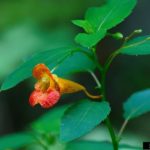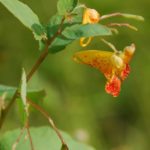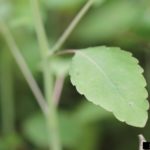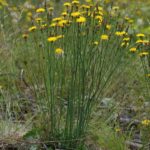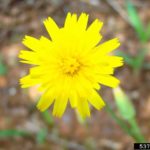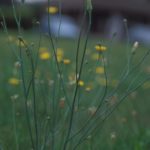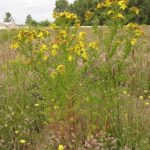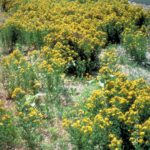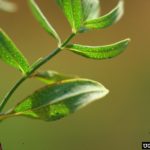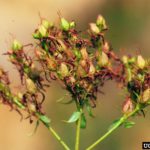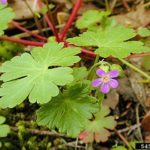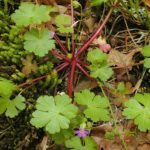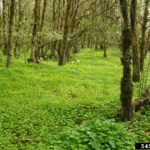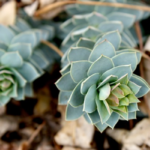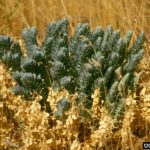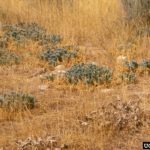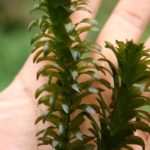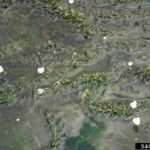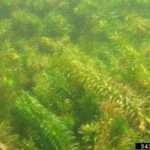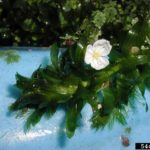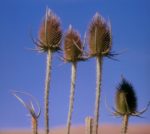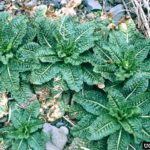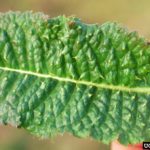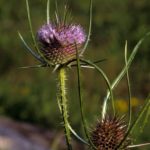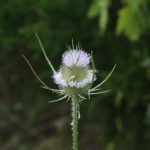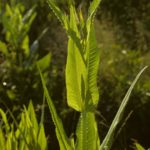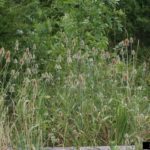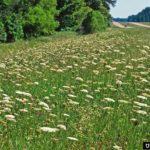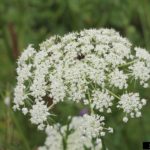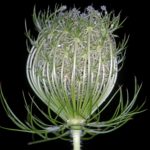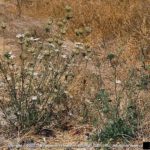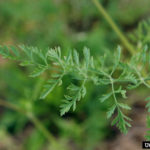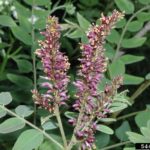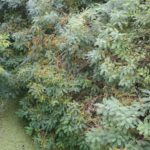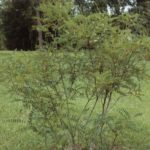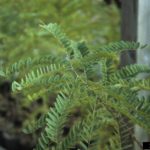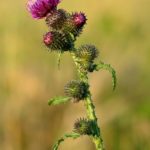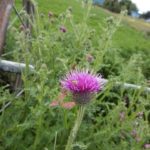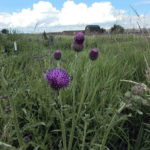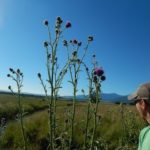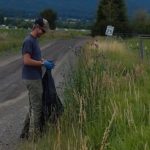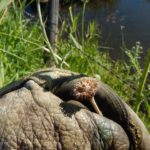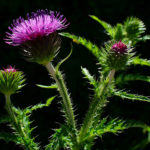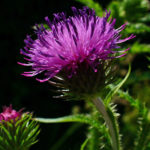Gallery:
- Jewelweed flower
- Jewelweed flower
- Jewelweed leaf
- Jewelweed seeds
- Jewelweed infestation
Common names:
Jewelweed, spotted touch-me-not
Scientific Name:
Impatiens capensis
Description:
Jewelweed is an annual in the Balsaminaceae (balsam) family. The flowers come in pairs, have an upper and lower lip, a curved spur, and are orange, sometimes with red spots. The leaves are alternate, up to 4.75 inches long, with rounded teeth on the margins and a pointed tip. The stems are weak and watery. Jewelweed reproduces by seeds which are ballistic and can eject 4 to 8 feet from their capsules when touched.
Life cycle:
Height of mature plants
2 – 5 feet
Flower color:
yellow – orange, sometimes with red spots
Bloom time:
August – October
Look-a-likes:
Jewelweed looks similar to other Impatiens species, however the other species that have been documented in the area all have white, purple or pink flowers.
Habitat:
Jewelweed prefers moist, semi-shady areas. It can often be found growing in riparian areas, floodplains, ditches, and in forested edges near wetlands.
Impacts:
Jewelweed can form dense stands that out-compete native plants. When this plant dies in the fall (because it is an annual), it leaves exposed soil which causes erosion and reduced water quality. Furthermore, because pollinators are attracted to this plant, it competes with native species for pollinator services, reducing seed in those native plants.
Noxious Weed Listing:
- WeedWise: maintenance
- State of Oregon: not listed
- State of Washington: Class C
- Four County CWMA: Class C
- Columbia Gorge CWMA: Class W
Origin:
North America (East of the Rocky Mountains)
Links:
Washington Noxious Weed Profile
Invasive.org profile
Burke Museum Plant Profile

